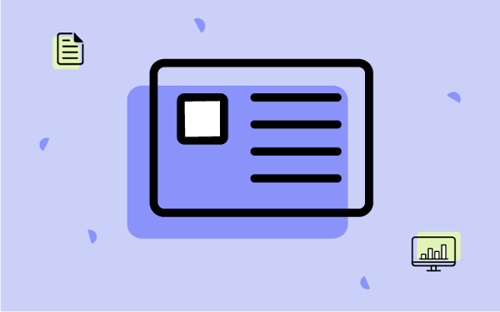Building and scaling a well-oiled marketing team that facilitates growth is a tall order. Building and engaging an audience with insightful content that pushes the known boundaries of your market is tough. Doing so while your competitors are similarly vying for your audience’s attention makes the challenge even greater — but it’s not impossible.
Every message your competitors push into the market impacts your own marketing activities. Your audience has a limited appetite for your content, your campaigns, and your overall message. Ensuring your marketing programs are differentiated in how they solve your customers’ pain is a critical step in ensuring that every message you produce resonates with potential buyers.
By understanding the strategies deployed by your competitors, you can ensure that your content, campaigns, messaging, and every other component of your marketing strategy stand out. Every function within marketing - product marketing, demand generation, and content - can derive meaningful insights from your competitors that will help maximize their strategies and serve up outputs that are as competitor conscious as they are customer-centric.
Product Marketing
Product marketers are the chief navigators of their product’s commercialization strategy in their market. To establish a firm grip on their market, they need to understand how competitors’ products are vying for their target buyers’ attention. Anything that can help better position a product launch, help sales differentiate during the sales cycle, or broadly defend their product’s unique value in their market should be the focus of a product marketer’s competitive efforts.
Here are just a couple of competitive intelligence (CI) sources product marketers can leverage to accomplish those goals:
Product & Pricing Pages: Competitors’ websites are an excellent source of intel, especially if you can monitor changes over time. Product pages provide a high-level overview of product messaging/positioning, and pricing pages provide key insights into how they bundle offerings, services, etc.
Review Sites & Forums: These are your best sources of product information from a key source - customers. Review sites like G2, Capterra, and Trustpilot are excellent sources of intel. Industry forums, social media channels, and anywhere else customers might be discussing your competitors’ products are also worth monitoring.
Demand Generation
Demand generation marketers are too often isolated from the details of the growth strategies and tactics deployed by their competitors. This is a missed opportunity. Understanding and analyzing competitors’ marketing campaigns is critical for crafting campaigns that stand out to your target audience and deliver results. Details on a competitor’s marketing channels, campaigns, promotions, and messaging are key inputs for a demand gen marketer’s competitive analysis.
Here are a couple of sources of intel demand gen marketers can leverage to run better campaigns:
Landing pages: These provide valuable insights into how your competitors’ position the value of their offers. It’s important to remember that your offers don’t exist in a vacuum. Even small changes to your own landing page copy that helps differentiate your offers can help improve conversion rates.
Marketing partnerships: Co-marketing/partner marketing is a popular strategy that helps companies expand their reach and boost their brand by association with another. Keeping track of who your competitors partner with in their marketing efforts can help you understand the gaps they’re filling, and can inspire your own partnership ideas as well.
Content Marketing
Companies in most industries are churning out more content than ever. Many product marketers find competitors’ content to be an invaluable source of competitive messaging and industry strategy clues. Content marketers can also derive a lot of valuable insights from their competitors’ content. Understanding your competitors’ blog topics, SEO strategy, thought leadership, and case study arsenal is the key to serving up content that stands out and solves for your customers’ pain/goals in a differentiated manner. When analyzing your competitors’ content strategies, also take note of release frequency, content type, and the quality of the content.
Blog content & SEO strategy: Understanding the blog strategy of your competitors is key to understanding not just their key content topics, but also their SEO strategy. Combing through the titles, meta-descriptions, and tags of competitors’ blog posts will reveal which keywords they are targeting. Hint—to find metadata on a page, simply right click and select “View Page Source.”
Long-form content & case studies: Whitepapers, ebooks, and case studies are where your competitors proudly display what they believe are the key benefits of their product/service. Make sure you understand those benefits before extolling your own virtues.
What, So What, So What Now
All of these sources of competitive intelligence are worthless if they don’t inspire action. To ensure your competitive analysis actually results in a competitive advantage for your marketing team, apply a “What, So What, So What Now” approach. The intel you discover - poor customer reviews, a new case study or marketing channel, etc. - is merely the “what”. The next step is to analyze the significance of your findings - the “so what”.
If your competitor publishes three new case studies and all of them feature customers in the healthcare industry, can you reasonably determine that your competitor is making a push into healthcare? Or do you need further corroboration to support that hypothesis? Finally, the “so what now” is what you do about that hypothesis. If they are making a push into healthcare, how will you respond? New industry-specific content/campaigns? A new messaging brief for sales?
The possibilities for how to out-maneuver competitors’ marketing strategies are endless and vary considerably by industry, marketing team makeup, etc. This writeup barely scratches the surface. That’s why we partnered with HubSpot to produce a more comprehensive guide on Competitive Analysis for a Growth Mindset. It focuses more deeply on how to execute on the “so what now” of competitive analysis for marketers and can equip you with strategies to help you strategically expand the impact of your marketing programs.

Related Blog Posts
Popular Posts
-
 How to Create a Competitive Matrix (Step-by-Step Guide With Examples + Free Templates)
How to Create a Competitive Matrix (Step-by-Step Guide With Examples + Free Templates)
-
 The 8 Free Market Research Tools and Resources You Need to Know
The 8 Free Market Research Tools and Resources You Need to Know
-
 Sales Battlecards 101: How to Help Your Sellers Leave the Competition In the Dust
Sales Battlecards 101: How to Help Your Sellers Leave the Competition In the Dust
-
 6 Competitive Advantage Examples From the Real World
6 Competitive Advantage Examples From the Real World
-
 How to Measure Product Launch Success: 12 KPIs You Should Be Tracking
How to Measure Product Launch Success: 12 KPIs You Should Be Tracking





